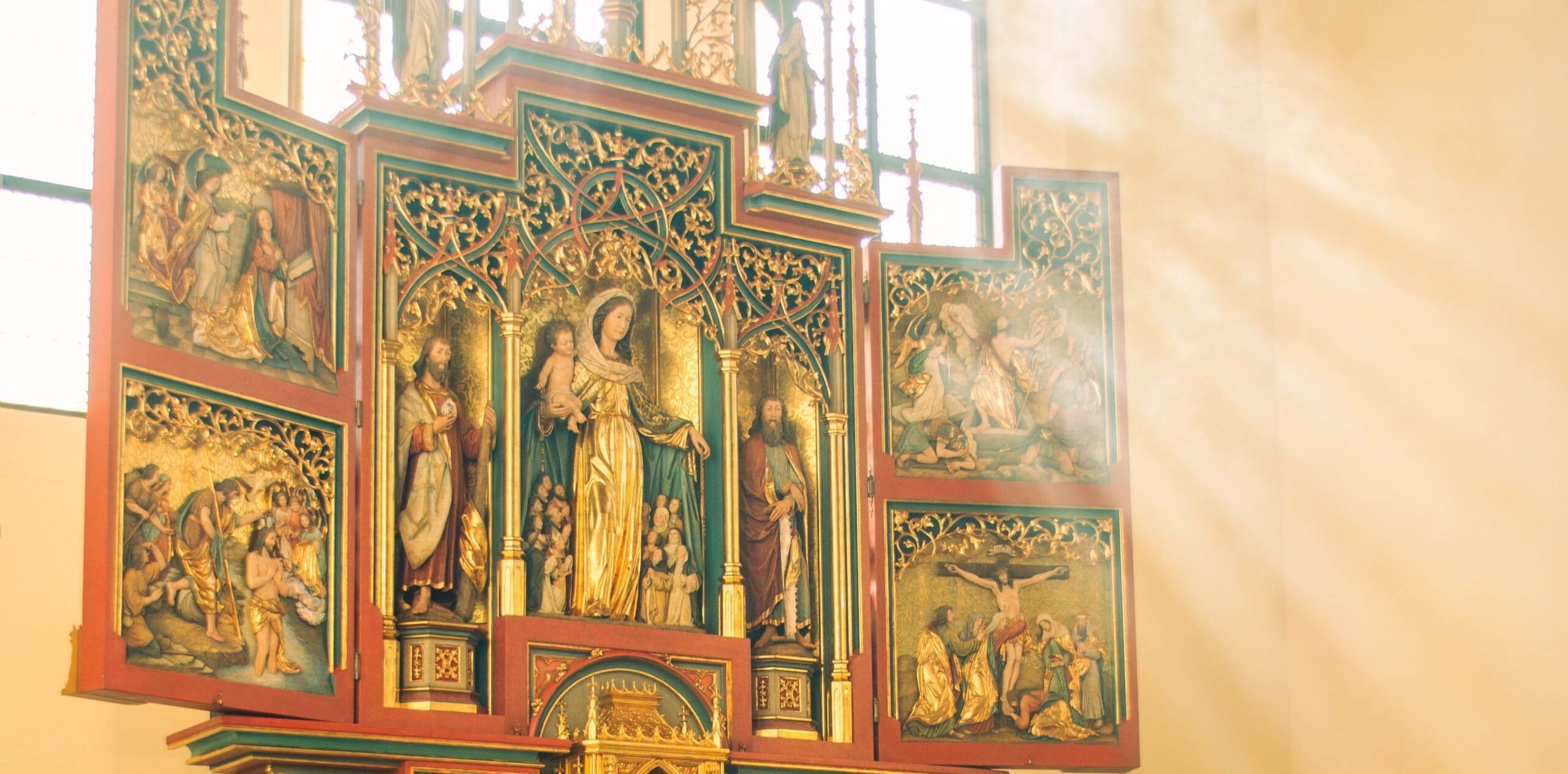By Fr Armand de Malleray, FSSP
Genuine beauty is the splendour of the truth. The more directly a truth refers to God, the more splendid its illustration must be. This applies supremely to the sacred liturgy, combining the best of the fine arts and artisanship―architecture, music, poetry, vestments, goldware and silverware, glazier work, choreography, and, last but not least, paintings and sculptures. Since the holy Sacrifice of the Mass is the summit of the liturgy, Holy Church has enshrined with worshipful splendour the great mystery of her Spouse’s own Sacrifice unbloodily re-enacted on her altars.
The loss of a landmark of liturgical beauty shocked the world when the French cathedral of Notre-Dame went up in flames during Holy Week 2019 in Paris. On watching the breaking news that fateful afternoon, millions who may not call themselves Catholics nor even believers of any kind yet mourned as orphans the most popular of sacred buildings in the world. Thankfully the walls and stained-glass windows were saved, as were most paintings and sculptures made in the ages of faith. The cathedral is due to reopen on the feast of the Immaculate Conception this year.
On a more modest scale in rural Mayenne (near Solesmes in western France) a religious community using the traditional Dominican rite has done more than restore a sacred artefact from the past. Rather, they have commissioned a brand new altarpiece that worshippers would assume dates back from medieval times. Instead, the Marian triptych in the Dominican priory of Chémeré-le-Roi was created from scratch in a remote valley of South Tyrol. Master carver Remy Insam was already sixty-five when he hesitantly accepted the commission. After decades spent in arduous labours in his workshop at Sankt-Ulrich village near the Austrian border of northern Italy, the artisan was entitled to well-earned rest. Even though woodcarving is to Master Insam much more than a job―a calling rather to evangelise through sacred beauty, the scale of the proposed Dominican altar was daunting.

Standing nine meters high by three meters wide, the altarpiece was to depict all the mysteries of the holy Rosary, including dozens of statues large and small, fitted in a monumental architecture of fretwork and soaring pinnacles, arches, and niches, all hinged, gilded, and painted by hand. Master Insam would need to rely on the combined skills of an architect, of a draftsman, and a cabinet maker, of a carpenter, of a gilder and painter, no less than of a woodcarver. In fact, nearly the entire village of Sankt-Ulrich would need to become involved.
Thankfully, that had already occurred when creating also from scratch the altarpiece for the newly built Cathedral of Our Lady of Fatima in Karaganda, Kazahkstan, following a commission by Bishop Athanasius Schneider. Master Insam accepted the commission for the Dominican Priory, then, which he envisaged as the culmination of his career.
Father Jordan-Mary, FSVF explains: “The technique of gilding, Remy Insam’s main speciality, is Branntweinvergoldung, or tempera gilding, which allows the best quality. It requires first applying a coat of chalk, then three successive coats of Bologna red loam, mixed with rotten egg white, then sprinkled with brandy, which must be allowed to dry for a few minutes before applying the gold leaf.” The new altar was consecrated a year ago on 30th September 2023. It is a striking example of the revival of sacred architecture led by traditional communities and conservative prelates across the world. May they be rewarded by God for their witness to the truth offered to the eyes of worshippers as an anticipation of our encounter with Christ and Our Lady in heaven, please God.
Article first published in dowry No63, Autumn 2024

